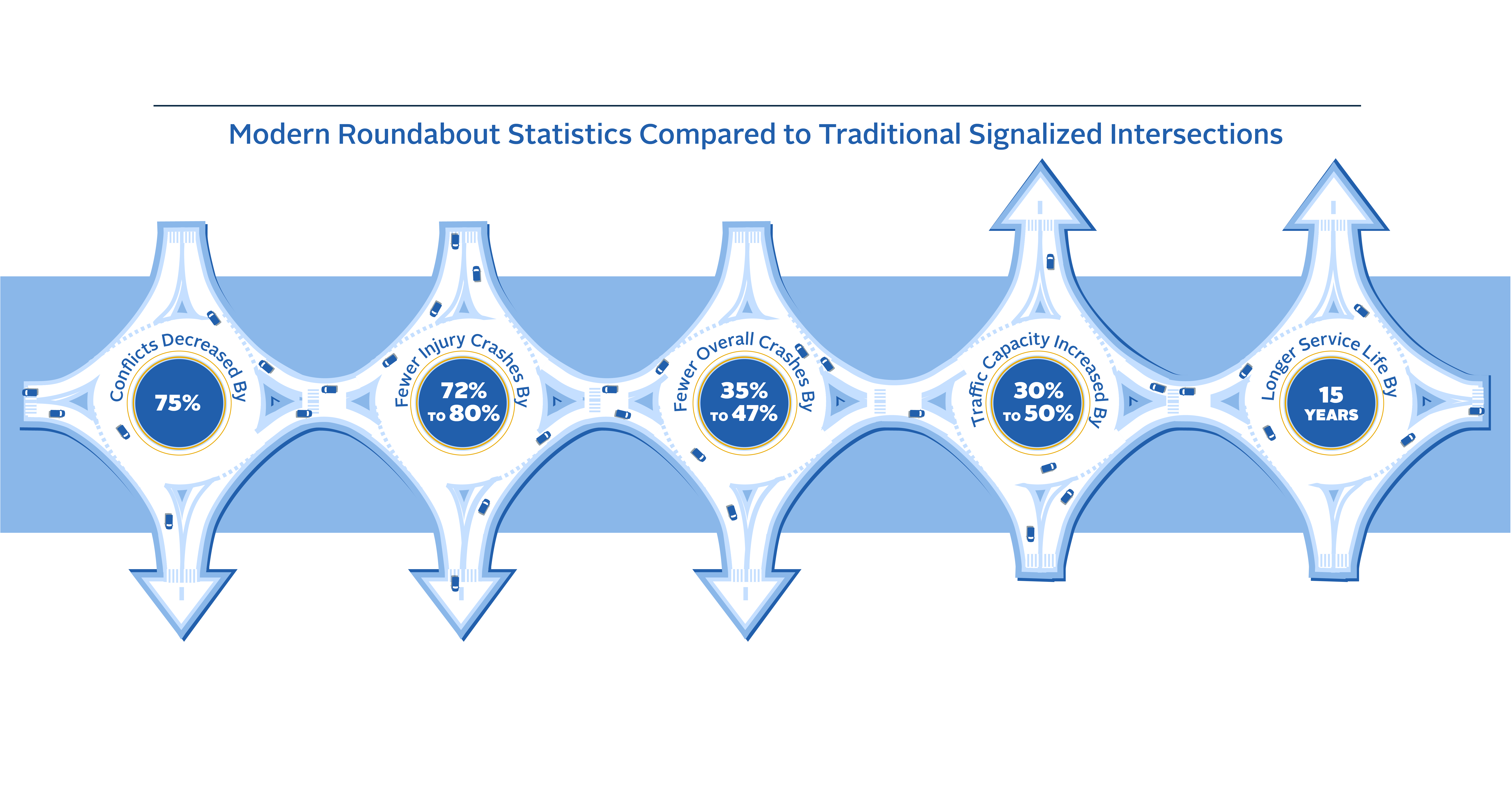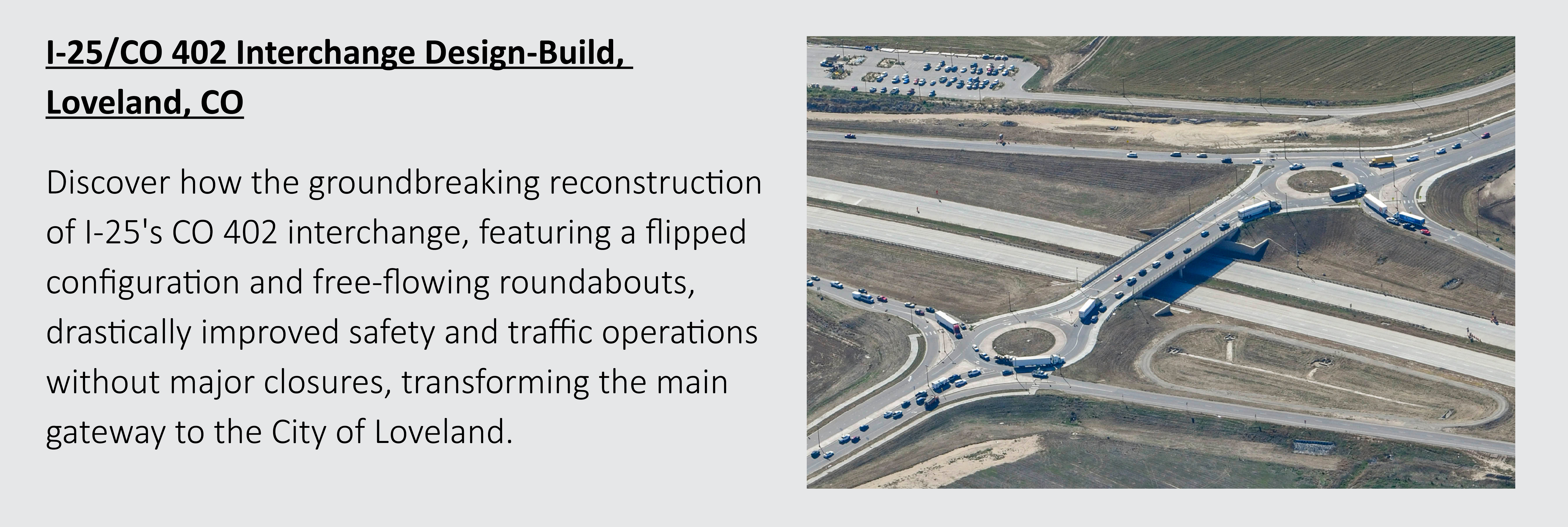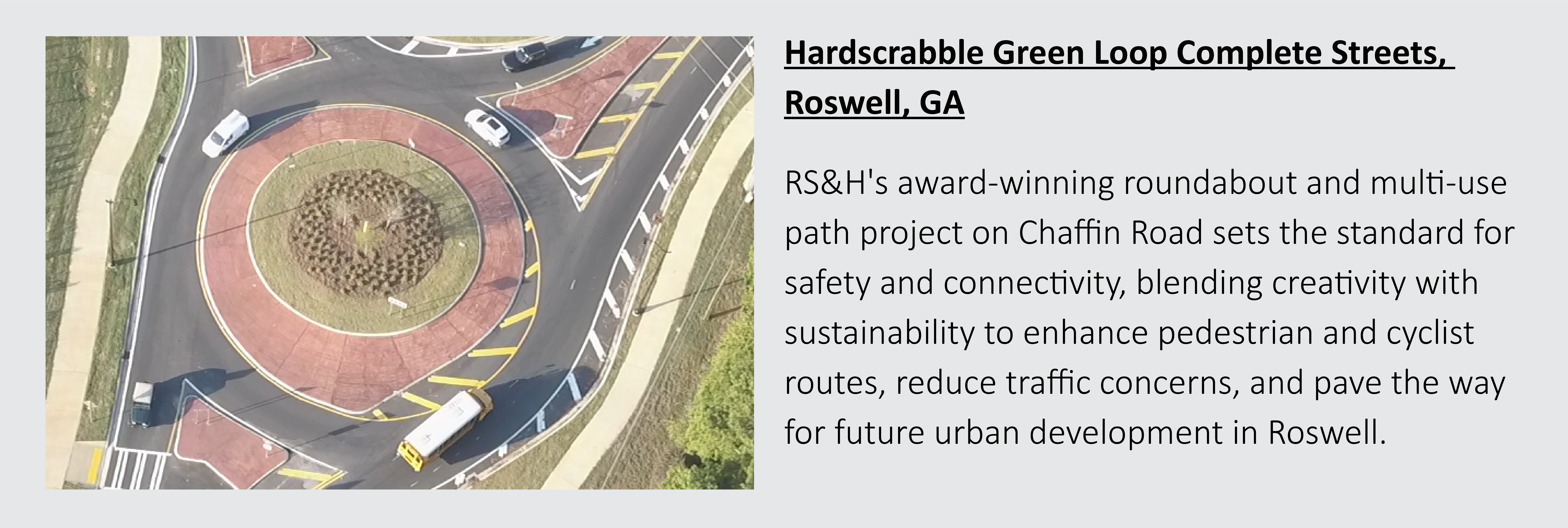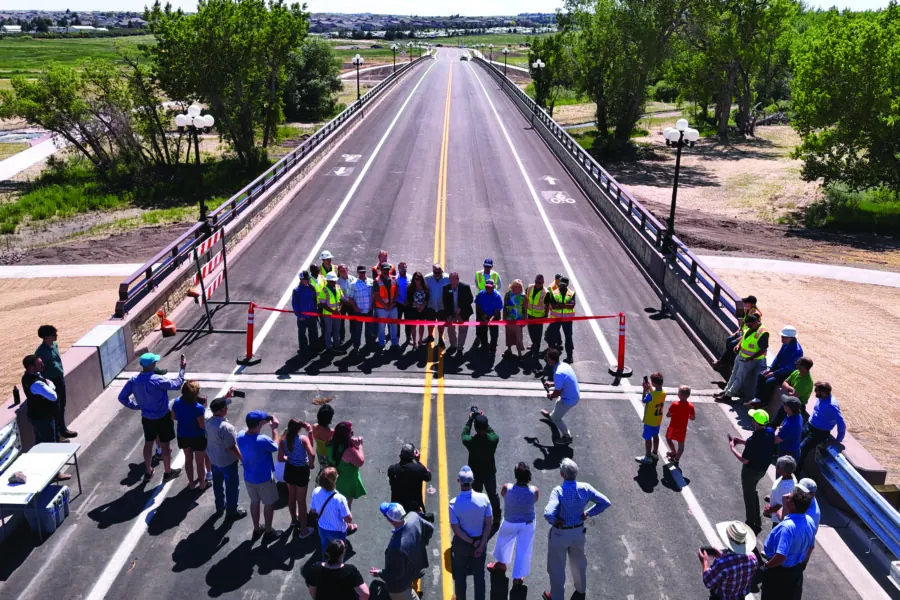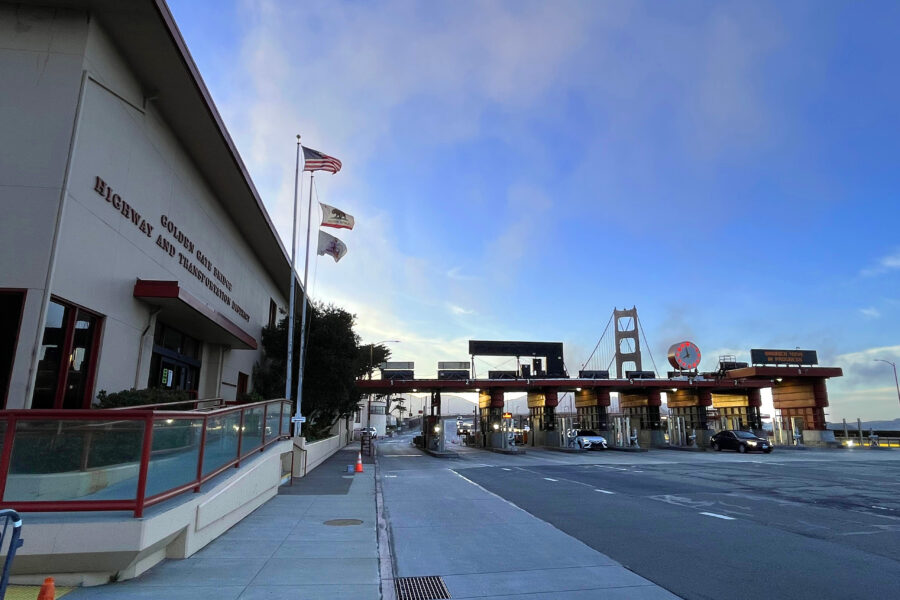Navigating Modern Roundabout Design: Avoiding Common Pitfalls
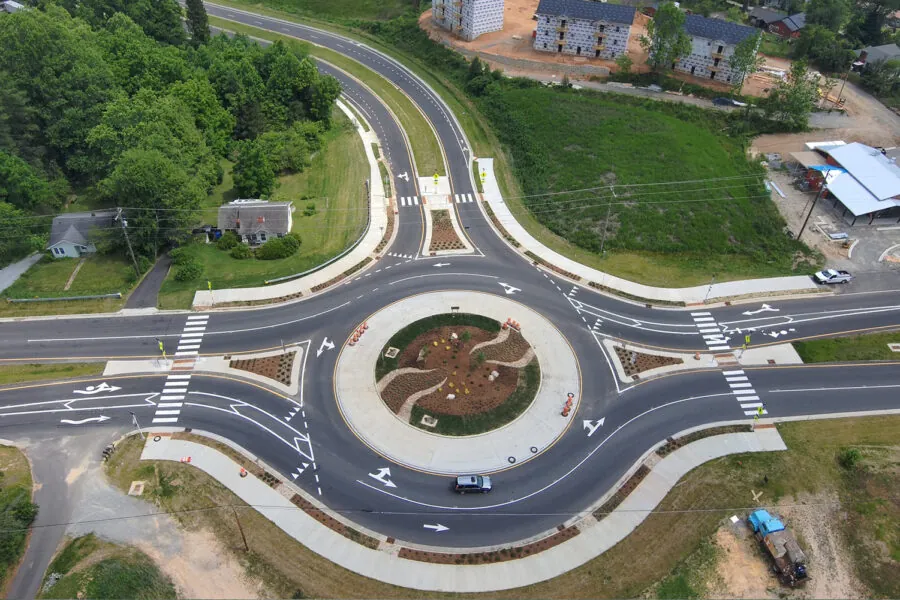
Benefits of Roundabouts
As the demand for transportation improvements rises due to aging infrastructure and growth, RS&H consistently integrates resilient and sustainable alternative intersections into its project designs. One such innovation is the modern roundabout, which is gaining popularity in the United States. The number of roundabouts has surged from approximately 50 in 1998 to an estimated 8,800 in 2021. [1] This is due to the many benefits they demonstrate, including:




Common Pitfalls of Roundabout Design
As more roundabouts are implemented across the United States, more data is being accumulated while standards and guidelines continue to be revised and developed to assist in successfully designing and installing these facilities. RS&H experts have identified common pitfalls to avoid during planning and design of roundabouts that will alleviate/eliminate causes of traffic congestion, safety hazards, inefficient traffic flow, and cost overruns, including:
Overlooking the Benefits and Tradeoffs: Ineffective decision-making can arise if project outcomes and context are not identified early. Unique project goals necessitate proper performance measures to evaluate benefits and trade-offs. Early completion of this step helps refine suitable concepts by discarding mediocre ones.
Deviation from an Established Design Process: The fast-paced, competitive Architectural Engineering and Construction industry often pressures teams to meet unrealistic deadlines, leading to deviations from established design processes. Such shortcuts can overlook critical steps, increasing project failure risk.
Lack of Contextual Sensitivity: Failure to consider nearby facilities, like warehouses with semi-trucks, can lead to improper lane widths. Accurate assessment of the surrounding area and vehicle types is crucial for proper roundabout sizing.
Not Determining the Fastest Path: Ignoring a vehicle’s fastest path in roundabout design can result in crashes due to uncontrolled speed variations. Incorporating speed control design features for optimal vehicle movement is essential.
Poor Lane Configurations and Markings: Inadequate understanding of travel modes and their interaction with the roadway network can lead to confusing lane assignments and unclear markings, increasing crash and congestion risks.
Ineffective Pedestrian and Bicycle Accommodations: Poor assessment of pedestrian crossings, traffic speed, and driver cognitive demands (e.g., drivers seeking gaps in traffic) can result in ineffective pedestrian accommodations and limited cyclist accessibility.
Visibility and Sightline Issues: Maximum visibility and clear sightlines are crucial for safety in roundabout design. Obstructions on the central island can hinder drivers’ ability to see oncoming traffic, affecting safe entry decisions.
Lack of Proper Lighting and Visibility: Adequate lighting and reflective markings enhance safety by improving visibility for vehicles and pedestrians, especially at curves where headlights may be insufficient.
Lack of Advance Warning Signs and Marking: Insufficient warnings can lead to higher approach speeds, elevating the risk of crashes and their severity. Early and adequate warnings help drivers reduce speed and comprehend guiding signs for safe navigation.
Poor 3D Modeling: Inaccurate 3D models can cause significant construction issues, such as mismatched elevations. Precise modeling promotes accuracy, consistency, and early identification of design flaws. It also facilitates effective communication and coordination with stakeholders, and compliance with safety and design standards.
Strategies to Avoid Common Pitfalls
This is not a comprehensive guide to roundabout design. There are many other factors to watch out for when selecting, designing, and implementing a roundabout. But the common pitfalls can be avoided by utilizing the following strategies:
Conducting a Thorough Site Analysis and Traffic Study: A comprehensive site and traffic analysis is crucial to determining the appropriate improvement application for an intersection. This will help establish the project context including the specific characteristics (purpose and need, goals, users, modal priority), project type (new, reconstruction, improvements), and project influences (context, environment, community, facility type). This step will set the stage for the development of the project.
Using Design Guidelines and Best Practices: As more and more roundabouts are constructed across the United States, data is driving ongoing revisions and developments in standards and guidelines that will aid in the successful design and installation of these facilities. Analyzation of real-world data and incidents of successes and failures in roundabout design has informed the development of these documents. These guidelines, reports, and manuals, including the latest NCHRP Research Report 1043, FHWA’s Roundabouts: An Informational Guide, and client-based manuals such as TxDOT’s Roadway Design Manual, should not be taken for granted. They contain a wealth of information, including established design processes that guide through every stage from start to finish.
Incorporating Feedback from Stakeholders and User Groups: Stakeholders are critical to a design’s success. Early identification of stakeholders to gather input and understand the project context will help guide decisions, advance project activities, and promote support. For example, proactive outreach to the businesses in the area gets them involved in the design process and will result in a roundabout that will work for the regular users.
Community Familiarity and Acceptance: Community engagement is important throughout the whole process to gather input and feedback and educate and inform. It is critical to raise awareness of the benefits the roundabout will provide and educate on roundabout navigation and best practices to gain acceptance and confidence from the community who will be using the roundabout regularly.
Driven to Care: A Commitment to Safety, Innovation, and Sustainability
RS&H is transforming transportation infrastructure with innovative, safety-focused solutions. We prioritize efficiency and sustainability and use and integrate the latest technologies. Partner with RS&H to elevate infrastructure projects with cutting-edge designs and make a lasting impact on communities across the United States. Reach out to learn how our team can support your goals.
Click on the project titles below to learn more about RS&H roundabout projects.
References:
1. National Academies of Sciences, Engineering, and Medicine. 2023. Guide for Roundabouts. Washington, DC: The National Academies Press. https://doi.org/10.17226/27069.
2. Title: Roundabouts; Website: Insurance Institute for Highway Safety (IIHS); URL: https://www.iihs.org/topics/roundabouts; Accessed: May 14, 2024
3. Title: Traffic Safety Methods: Roundabouts; Website: Washington State Department of Transportation (WSDOT); URL: https://wsdot.wa.gov/travel/traffic-safety-methods/roundabouts; Accessed: May 14, 2024


